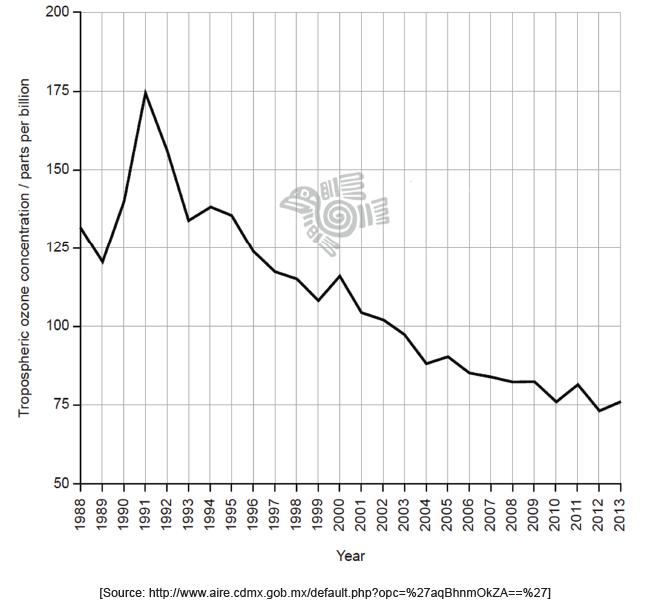

Using named examples, outline the difference between natural and anthropogenic atmospheric primary pollutants.

Discuss reasons for high human population density within urban systems.

Evaluate a range of pollution management strategies that can be used to reduce urban air pollution.

State four ways in which a country can increase its energy security.

Describe four factors that contribute to the occurrence of photochemical smog, and the direct and indirect impact it can have on societies.

Discuss the use of the doughnut economy model in building sustainable cities.

Figure. Atmospheric levels of carbon dioxide over time
(Source: Skeptical Science)

In 2015, atmospheric carbon dioxide levels reached 400 parts per million (ppm). Calculate the percentage increase from 1950 to 2015.

State a reason for the rise in carbon dioxide levels in recent times.

Explain the role of carbon dioxide in the greenhouse effect.

Describe an example of a negative feedback mechanism associated with rising carbon dioxide level.

Figure 3: Tropospheric ozone levels in Mexico City


With reference to Figure 3, calculate the difference between the highest concentrationand lowest concentration of tropospheric ozone.

State two factors necessary for the chemical formation of ozone in the troposphere.

Outline why a high concentration of ozone in the troposphere is a direct problem forhumans, while in the stratosphere it is a benefit to humans.

Suggest possible reasons for the overall trends of tropospheric ozone levels in Figure 3.

Outline two factors that affect the frequency and severity of photochemical smog in an area.

Evaluate strategies to manage regional acid deposition using the pollution management model.

To what extent have international agreements been successful in solving atmospheric air pollution and climate change?

Figure 5: A layer of smog covering the Chilean city of Santiago

[Source: CC BY-SA 3.0, https://commons.wikimedia.org/w/index.php?curid=428144\]

Identify one human factor that contributes to photochemical smog.

Identify one natural factor that contributes to photochemical smog.

Explain why the formation of photochemical smog may have harmful effects on the environment of cities such as Santiago (Chile).

Outline four impacts of acid rain on the natural and urban environment.

Using named examples where relevant, distinguish between primary and secondary pollutants.

Evaluate how pollution management strategies may regulate, reduce, and repair the impact of sulphur dioxide on ecosystems.

Outline the role of atmospheric circulation in the distribution of heat around the globe.

Using named examples, explain how feedback loops can lead to tipping points in relation to global warming.

To what extent do all countries have the same responsibility in dealing with atmospheric pollution issues?

Discuss the impact of increased UV radiation due to ozone depletion on both human health and ecosystems.

Discuss how human impacts on the atmosphere can terrestrial biome productivity.

Outline the role of the atmospheric system in the distribution of biomes.

To what extent is the need for conservation more significant in tropical biomes?
